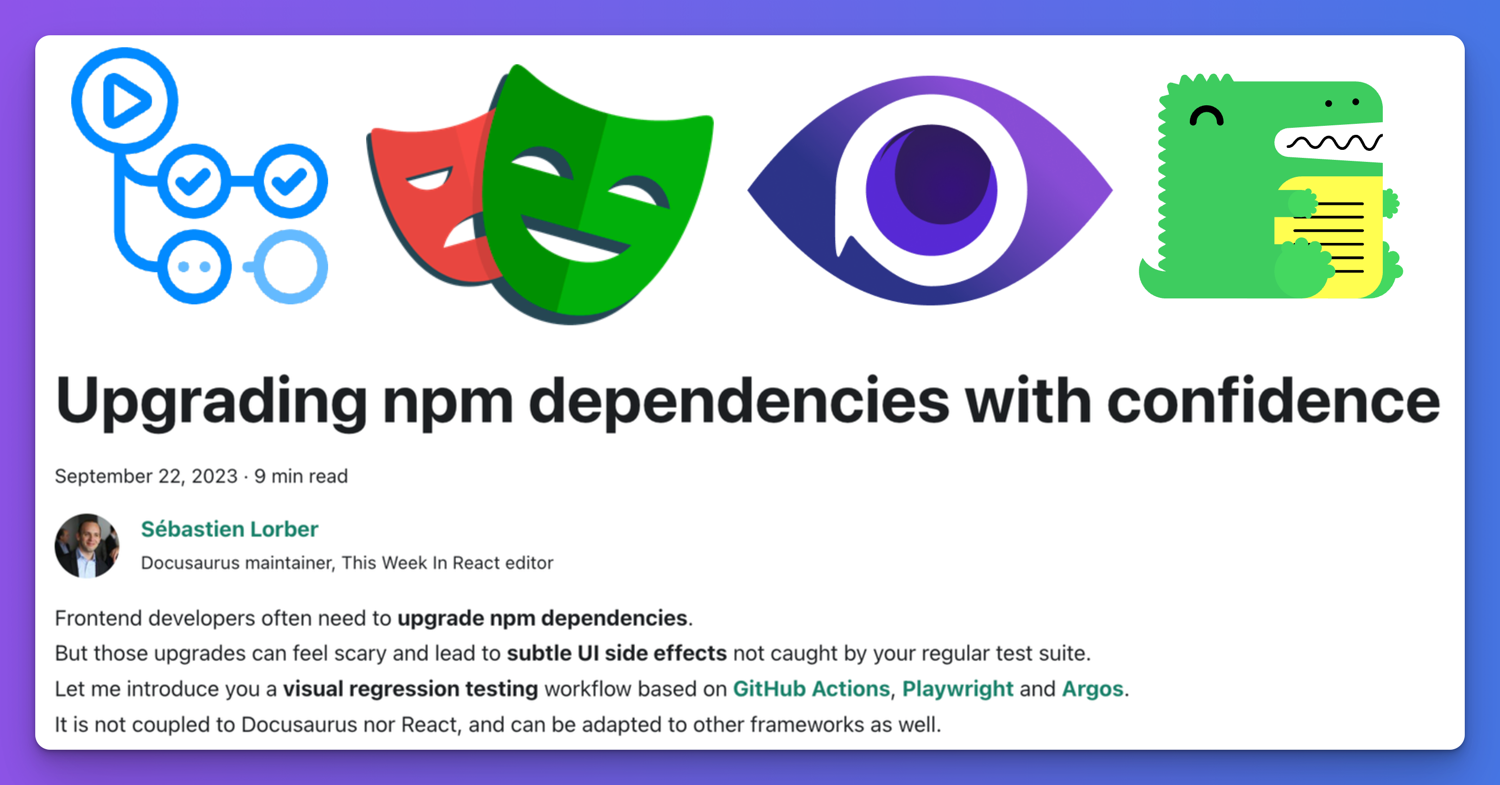Docusaurus 3.2
We are happy to announce Docusaurus 3.2.
The upgrade should be easy: as explained in our release process documentation, minor versions respect Semantic Versioning.
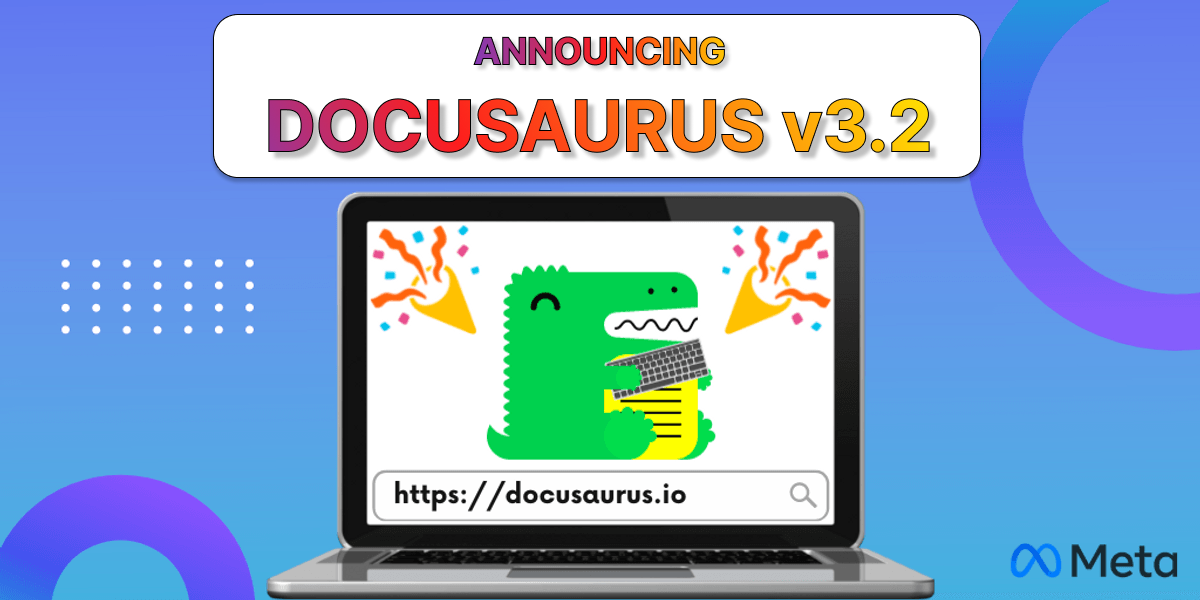
We are happy to announce Docusaurus 3.2.
The upgrade should be easy: as explained in our release process documentation, minor versions respect Semantic Versioning.

We are happy to announce Docusaurus 3.1.
The upgrade should be easy: as explained in our release process documentation, minor versions respect Semantic Versioning.
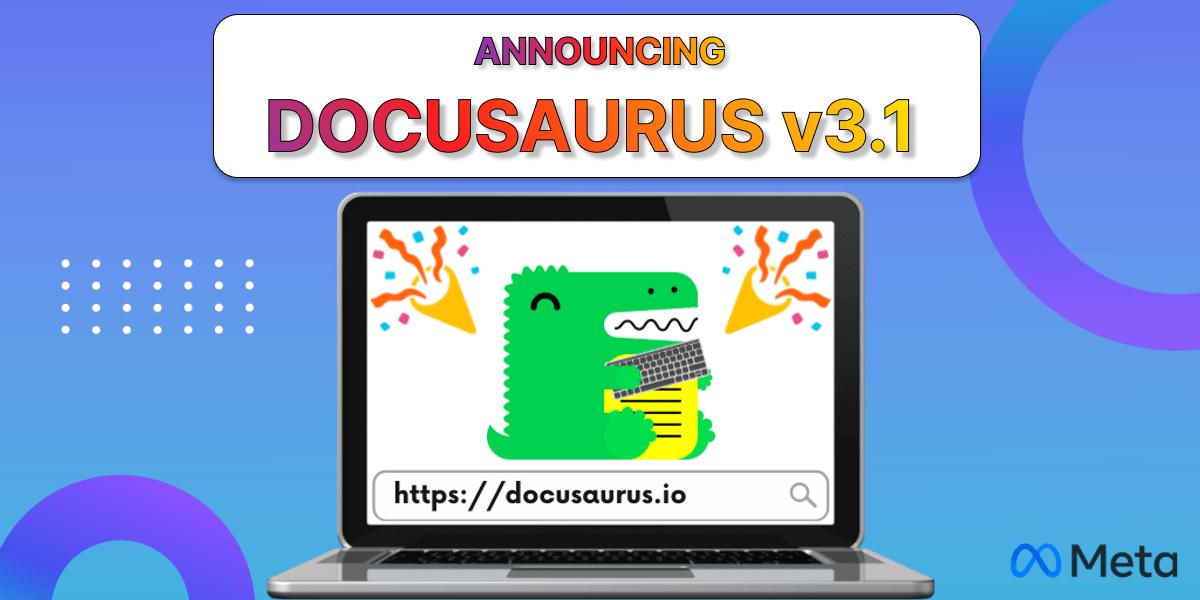
Today, we are happy to announce Docusaurus 3.0! 🥳
At Meta Open Source, we believe Docusaurus will help you build the best documentation websites with minimal effort, letting you focus on what really matters: writing the content.
This is a new major version of Docusaurus, coming with new exciting features and upgraded dependencies.
In line with the Semantic Versioning principles, this release includes breaking changes we documented thoroughly in the v3 upgrade guide. Breaking changes can be bothersome, but they are necessary to set the ground for a new wave of Docusaurus features we plan to implement.
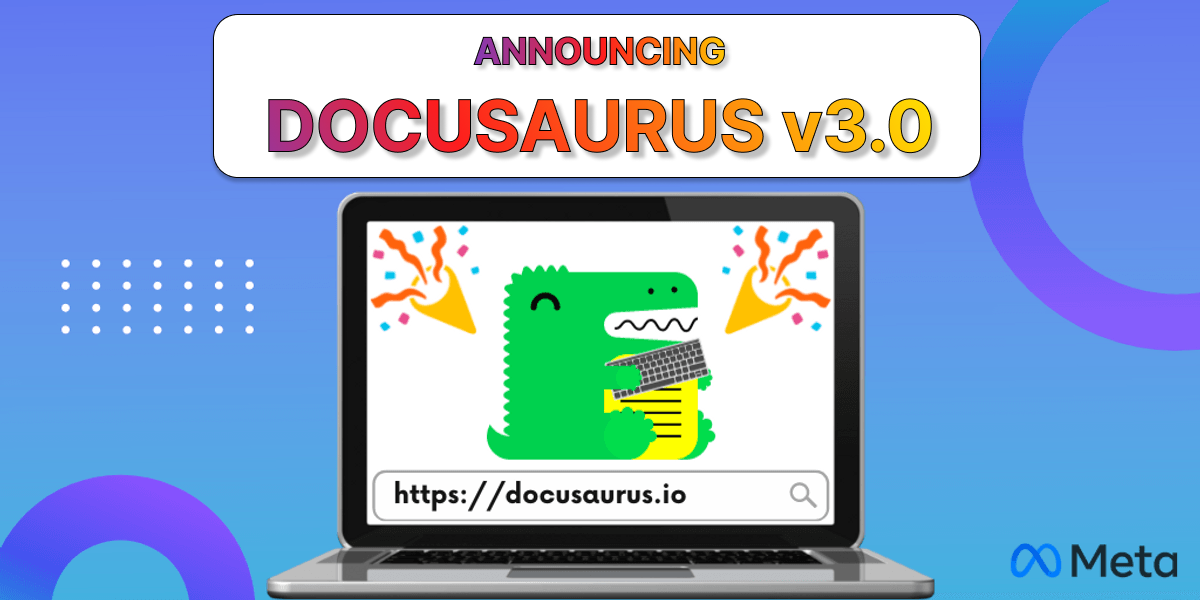
This blog post was written when Docusaurus v3 was in beta. There are some changes in dependency versions and upgrade steps you should be aware of if upgrading to Docusaurus v3 current stable releases. Use the upgrade guide for the most up-to-date migration steps.
Docusaurus v3 is now in beta and the official release is around the corner. This is the perfect time to start preparing your site for this new major version.
Docusaurus v3 comes with a few breaking changes, many of which can be handled today under Docusaurus v2. Preparing your site ahead of time can be done incrementally, and will make it easier to upgrade to v3.
The main breaking change is the upgrade from MDX v1 to MDX v3. Read the MDX v2 and MDX v3 release notes for details. MDX will now compile your Markdown content more strictly and with subtle differences.
This article will mostly focus on how to prepare your content for this new MDX version, and will also list a few other breaking changes that you can handle today.
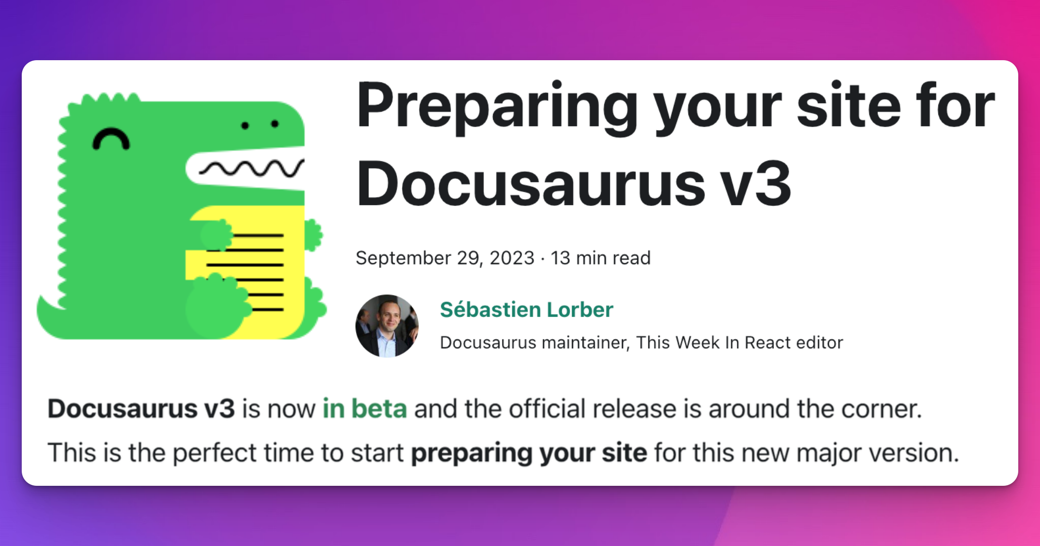
Frontend developers often need to upgrade npm dependencies, but those upgrades can feel scary and lead to subtle UI side effects not caught by your regular test suite.
Upgrading Docusaurus is a good example: without reviewing all the pages one by one, it's hard to be sure there's no visual regression. Docusaurus v3 is around the corner (currently in beta), and we would like to help you do this upgrade with confidence.
This article introduces a visual regression testing workflow based on GitHub Actions, Playwright, and Argos. It is not directly coupled to Docusaurus or React, and can be adapted to work with other frontend applications and frameworks.
